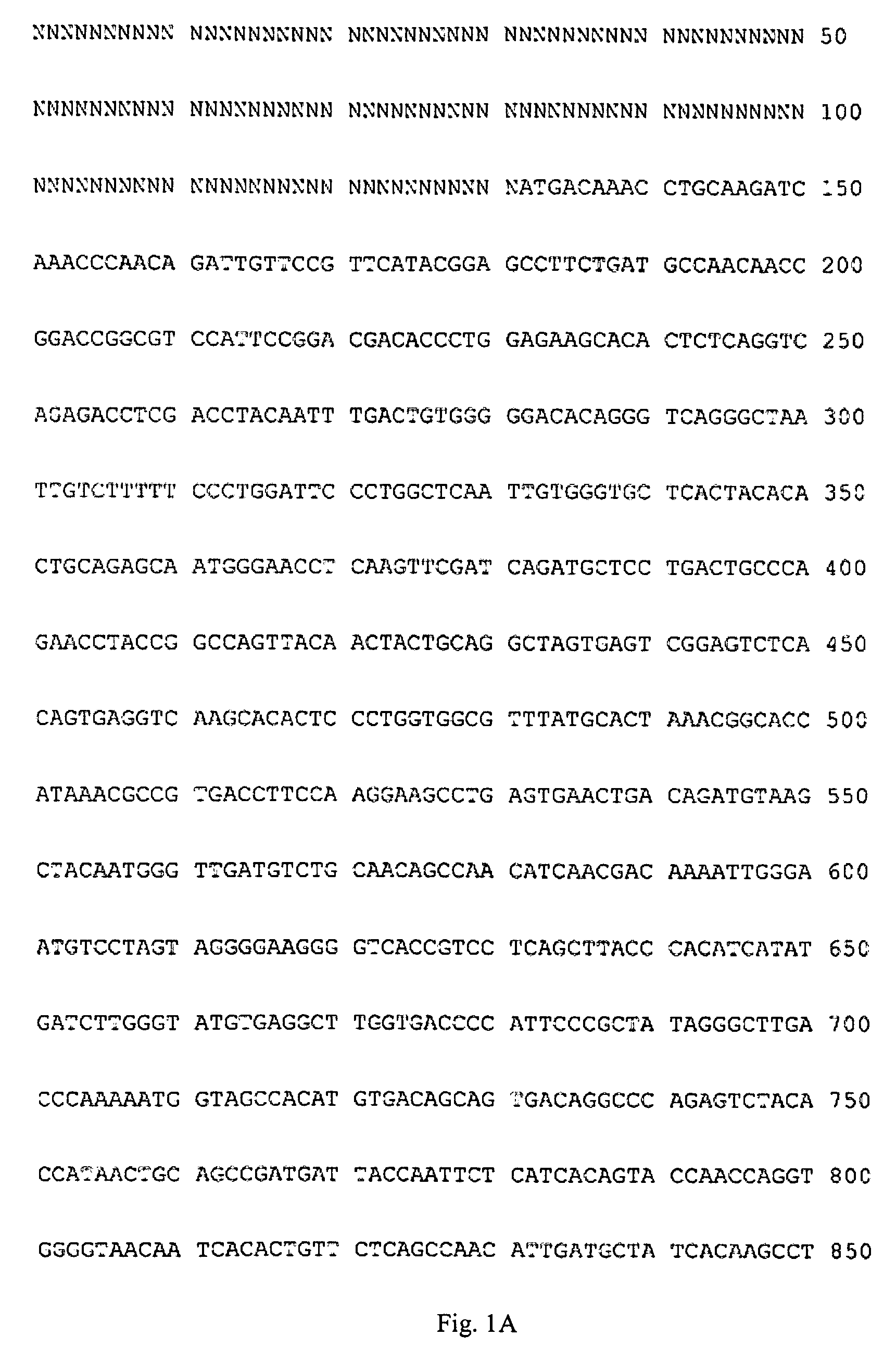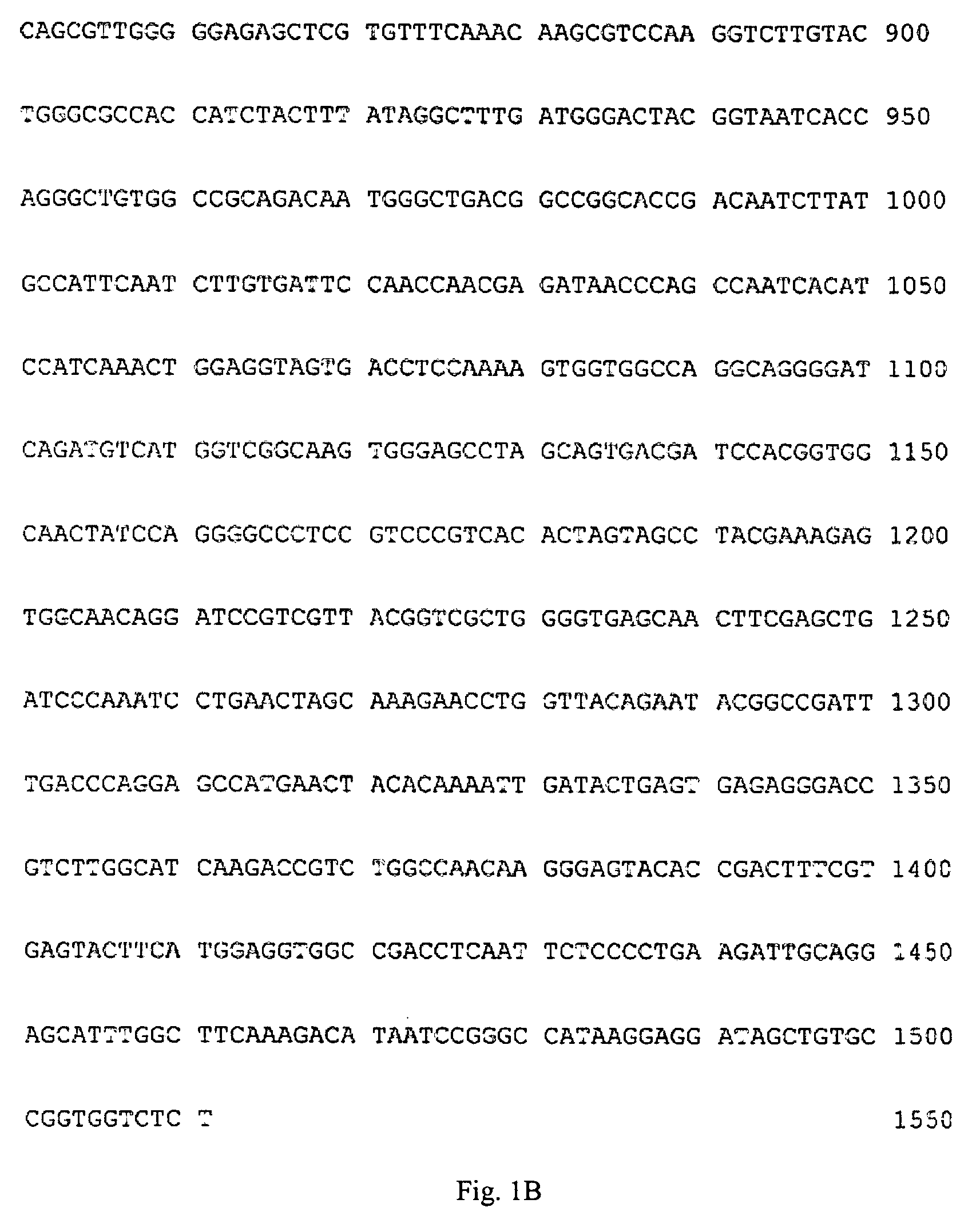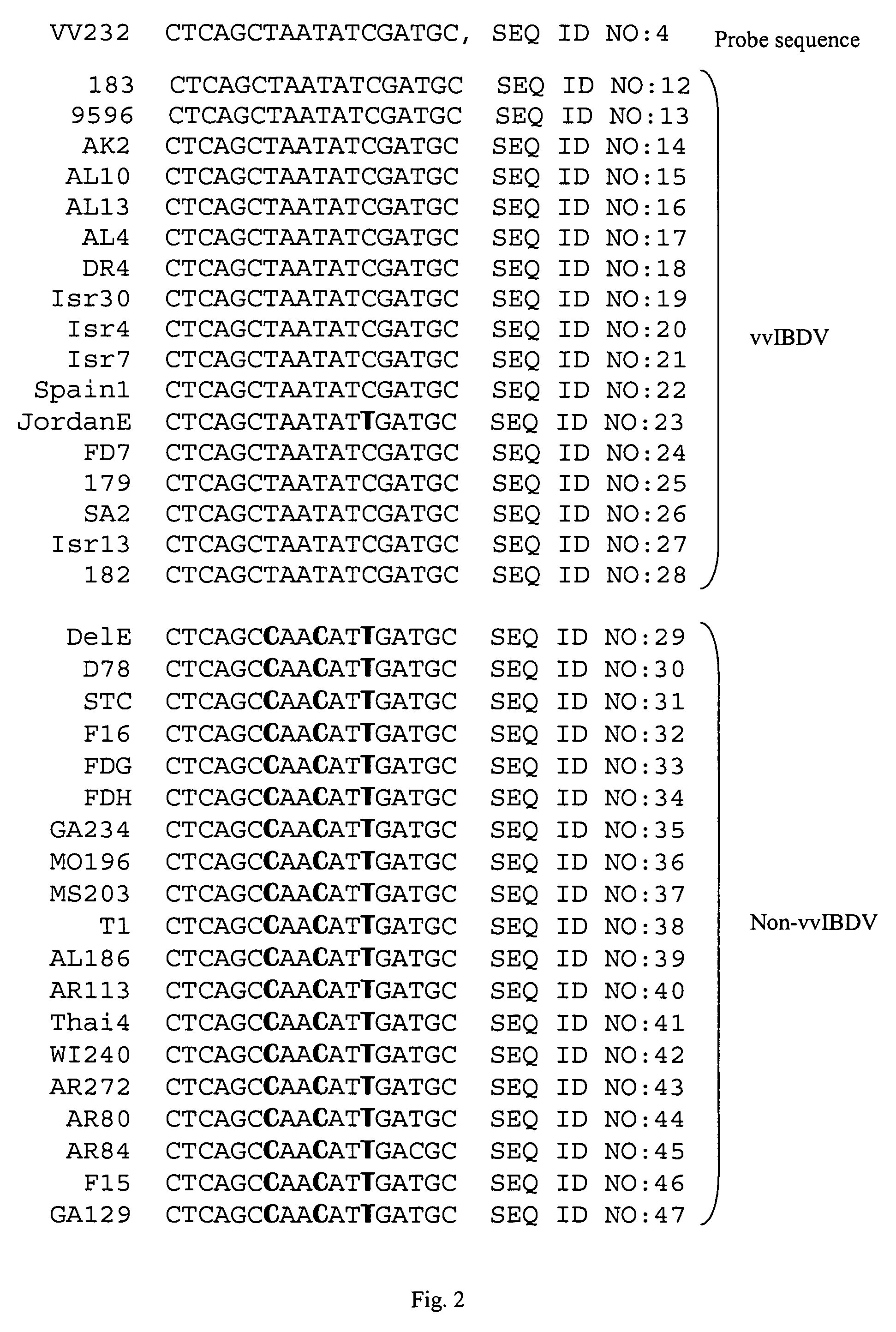Detection of very virulent infectious bursal disease virus
a bursal disease virus, very virulent technology, applied in the direction of microbiological testing/measurement, biochemistry apparatus and processes, etc., can solve the degree of damage to the immune system, the inability to use surveillance programs, and the cost of assays
- Summary
- Abstract
- Description
- Claims
- Application Information
AI Technical Summary
Benefits of technology
Problems solved by technology
Method used
Image
Examples
examples
Materials and Methods
[0048] Viruses. The vvIBDV strains used to develop and validate the present methods were submitted as genomic RNA to our laboratory under import permit #44226 from the USDA, Animal and Plant Health Inspection Service. The viruses were from Europe, Asia, Africa, the Caribbean and the Middle East. Genetic material from non-vvIBDV strains was obtained from domestic vaccines and outbreaks of infectious bursal disease (IBD) in the United States. These non-vvIBDV strains included variant and classic viruses. All viruses used in this study and their country of origin are listed in table 1.
TABLE 1Virus samples and their geographic origin.Country of OriginVirus SamplesUSAADel-E, D78, STC, F16, FDG,FDH, GA234, MO196,MS 203, T1, AL186, AR113,WI240, AR272, AR80,AR84, F15, GA129IsraelBIsr1, Isr2, Isr3, Isr4, Isr5, Isr6,Isr7, Isr8, Isr9, Isr10, Isr11,Isr12, Isr13, Isr14, Isr15, Isr16,Isr17, Isr19, Isr20, Isr21,Isr23, Isr24, Isr25, Isr29, Isr30SingaporeB179, 182, 183KoreaB9...
PUM
| Property | Measurement | Unit |
|---|---|---|
| temperature | aaaaa | aaaaa |
| melting temperature | aaaaa | aaaaa |
| melting temperature | aaaaa | aaaaa |
Abstract
Description
Claims
Application Information
 Login to View More
Login to View More - R&D
- Intellectual Property
- Life Sciences
- Materials
- Tech Scout
- Unparalleled Data Quality
- Higher Quality Content
- 60% Fewer Hallucinations
Browse by: Latest US Patents, China's latest patents, Technical Efficacy Thesaurus, Application Domain, Technology Topic, Popular Technical Reports.
© 2025 PatSnap. All rights reserved.Legal|Privacy policy|Modern Slavery Act Transparency Statement|Sitemap|About US| Contact US: help@patsnap.com



